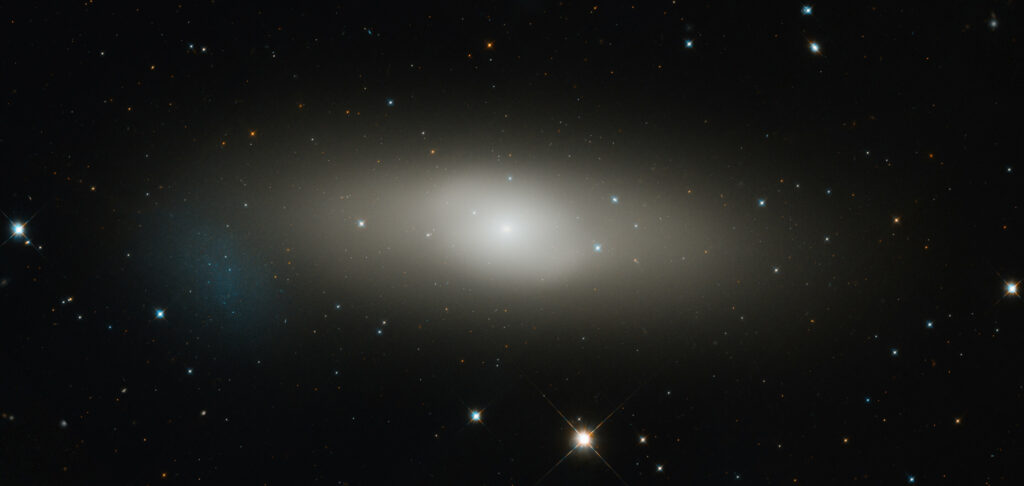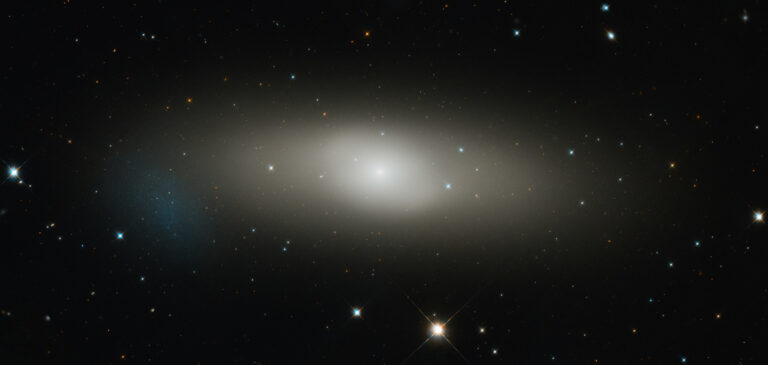The attention of the Hubble telescope is directed towards the expansive lenticular galaxy 1023
This latest image captured by the NASA Hubble Space Telescope showcases NGC 1023, a massive lenticular galaxy located approximately 36 million light-years away from Earth. Lenticular galaxies derive their name from their lens-like appearance when observed edge-on. These galaxies fall in between ellipticals and spirals in terms of their characteristics. Similar to spirals, lenticular galaxies possess a prominent central bulge and a flattened disk, but they lack spiral arms. Much like ellipticals, lenticular galaxies contain minimal amounts of gas and dust, and are primarily composed of old stars.

NGC 1023 is not the sole focus of this image. Positioned towards the lower left of the galaxy, there is a hazy blue patch known as NGC 1023a, which serves as an irregular satellite galaxy to its larger lenticular counterpart. This galaxy pair was part of a comprehensive study that examined various star systems and star clusters in galaxies beyond our own Milky Way. The researchers discovered a total of 81 long-lived open star clusters, which are loosely bound groups of several tens to a few hundred stars, within NGC 1023’s disk. Additionally, they identified 27 young blue star clusters, with half of them associated with the satellite galaxy and the remaining clusters spatially linked to the neutral hydrogen gas enveloping the large lenticular galaxy.
To create this image, data from Hubble’s Advanced Camera for Surveys was utilized, with supplementary information provided by the Pan-STARRS collaboration to fill in any gaps. The color blue in the image represents visible blue light, while the color orange represents near infrared light.
This article is republished from PhysORG under a Creative Commons license. Read the original article.
Do not forget to share your opinion with us to provide you with the best posts !




0 Comments